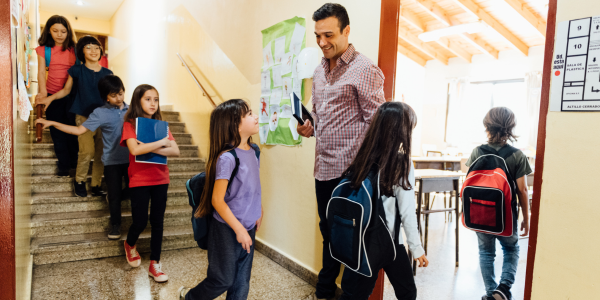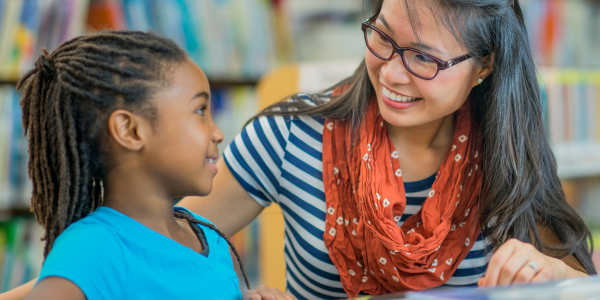Many students carry a heavy emotional load when they enter our classrooms. As teachers, we can’t afford to go through the day without addressing the impact of those experiences. So how do we support students dealing with trauma?
Trauma and Children
What is Trauma?
The American Psychological Association defines trauma as “an emotional response to a terrible event.” The term Adverse Childhood Experiences (ACEs) is a more precise definition used to describe trauma in children.
According to Kaiser Permanente, “ACEs are traumatic childhood events that occur before the age of 18 across multiple categories, including abuse, neglect, household dysfunction, systemic racism, and living in a high crime neighborhood. Experiencing multiple ACEs can be associated with a long-lasting exaggerated stress response that has been linked to risky health behaviors and chronic health conditions. Previous studies have indicated that those with 4 or more ACEs are 12 times more likely to attempt suicide and those with 6 or more ACEs have a 20-year shorter life expectancy.”
National data shows that one in three children in the United States (33.3 percent) have experienced at least one ACE, such as the death or incarceration of a parent, witnessing or being the victim of violence, or living with someone who has been suicidal or has had a drug or alcohol problem.
Fourteen percent of U.S. children have had two or more ACEs, and in 11 states, that percentage reaches as high as 23 percent. It’s sobering to consider that this data was collected before the pandemic.
As educators, we must remember that our students’ trauma has been exacerbated in recent years, whether through gun violence, the COVID pandemic, or a host of other factors outside of their control. This trauma has especially impacted low-income families and communities of color.

Practices We Prioritize to Support Students Impacted by Trauma
There is a great deal of research readily available on what we can do to support students who have experienced trauma, as well as a variety of practical approaches and strategies for trauma-informed instruction. The Department of Health and Human Services has a summary of some strategies as well as tips for preventing ACEs.
While we are not experts on trauma, as educators we—like many of you—have read the research and looked for ways in our own teaching to incorporate this research into our classrooms.
We shouldn’t have a separate set of trauma-informed practices that we roll out for one group of kids.
Instead, these essential and important practices should be part of the fabric of our teaching.
What we have come to believe is that we shouldn’t have a separate set of trauma-informed practices that we roll out for one group of kids.
Instead, these essential and important practices should be part of the fabric of our teaching. The practices are simply good teaching—good for all kids but especially for students who have experienced trauma.
We have learned that developing relationships, being responsive to the individual needs of our students, and being patient and flexible—while providing a clear, organized, and challenging curriculum—ensures that all classrooms are not only trauma-informed, but also engaging and caring places for students to learn and grow.
So, as we look at the practices we have found most helpful, we first want to underscore that a cookie cutter, one-size-fits-all approach does not exist.
Students react to trauma in many different ways. They might, for example, become irritable and difficult to soothe. They may be anxious or seem withdrawn. They may be sad or show signs of depression.
Trauma manifests itself in many ways and therefore it requires flexible and supportive responses. Below are some practices you can prioritize to support students.
Building, Deepening, and Repairing Relationships
All of the articles and studies linked above indicate that what kids who have experienced trauma need most are deep and meaningful relationships in safe and supportive classrooms.
It’s critical that we begin with the fundamental understanding that relationships are central to healthy prosocial development and essential to teaching and learning.
Schools need to be intentional about building and maintaining these relationships both between students and between students and adults.
This work cannot be left to chance. It must be purposely woven into the fabric of every day.
As we plan our instruction, we must prioritize the ongoing work of building, deepening, and repairing relationships as well as fostering a strong sense of community within our students.
This work cannot be left to chance. It must be purposely woven into the fabric of every day.

Establish Predictable, Safe, and Supportive Learning Environments
Creating calm, well-organized, and safe learning environments is a crucial goal for every teacher.
School days can sometimes feel hectic or frenetic, but when we create consistent and predictable routines within a calm and caring environment, we support kids when they encounter unplanned or unexpected situations or issues.
When we create consistent and predictable routines within a calm and caring environment, we support kids when they encounter unplanned or unexpected situations or issues.
In our Reconnecting and Rebuilding Toolkit, we offer several community chats/class meetings teachers can use to help students reconnect and establish the safe and supportive learning context in which to continue to grow and develop. Topics include managing difficult emotions, handling loss, and responding to tragedy.
Avoid the Deficit Mindset While Developing New Skills
All students come to school possessing skills they have learned in order to navigate relationships at home and in their communities. Students don’t come with a skill “deficit.”
Rather, because school is a unique environment, students need support to be flexible and resilient in the face of the challenges inherent to the school setting.
Students need support to be flexible and resilient in the face of the challenges inherent to the school setting.
We want to add new and enhanced skills to their current repertoire that help them: reflect on their relationships and interactions with others, ask for help when needed, share work fairly, monitor their attention, and refocus when necessary.
We want to help them develop empathy and compassion for fellow classmates.
We also support all students—not just those who have experienced trauma—in learning strategies to regain calmness, resolve conflicts, and take responsibility for their learning and behavior.
Support a Teaching and Learning Approach to Discipline
You can’t have a one-size-fits-all discipline system and expect it to be fair and equitable.
Punitive rewards-based discipline systems work against students who need patience, flexibility, and support to help them learn to control certain aspects of their behavior.
In our Caring School Community program, we work with teachers to help students acquire self-discipline: that is, to build self-control, conscience, and a sense of responsibility from within.
We do this by encouraging teachers to treat students with respect at all times and to address behavior mistakes as they would academic mistakes.
We suggest adopting a teaching and learning stance that empowers students to learn from mistakes and guides teachers to not see misbehavior as a character flaw, but instead as a challenge in a specific context that requires time and effort to address.
We don’t see behavior as something to track with points or to reward or to punish. We see behavior as something that we work on all of the time; it is something that students eventually need to own and not have managed for them.
We guide teachers to de-escalate situations and focus on what students can do to repair any damage they may have caused and what they might do differently in the future, rather than make students feel guilty or ashamed.
We don’t see behavior as something to track with points or to reward or to punish.
We see behavior as something that we work on all of the time; it is something that students eventually need to own and not have managed for them.

We Must Be Different
As we welcome students into our classrooms, we can’t do what we’ve always done. We must step out of our routine, out of our comfort zone, and change. We must be different.
What does “being different” mean in practice? That might mean reexamining our priorities during the school day to ensure that listening to and caring for students is at the forefront of everything we do.
It will mean not quickly jumping to conclusions when students are struggling (academically or behaviorally).
It will also mean making sure we acknowledge what is happening in our world today.
When a tragic event occurs, I cannot proceed, feeling grieved and numb, through my usual day of meetings—but not changing my behavior in a meaningful way. If I am going to be different, I can’t pretend that everything is okay.
When a tragic event occurs, I cannot proceed, feeling grieved and numb, through my usual day of meetings—but not changing my behavior in a meaningful way.
If I am going to be different, I can’t pretend that everything is okay.
Instead, I must ask more questions, listen with greater care and, finally, I must stop passively ignoring the broader context in which our schools operate.
We need to check in on each other, our students, and our families and make sure that we put each other at the top of our ever-expanding to-do lists.
We must create the spaces where we can be honest with each other, where we listen to each other, and where we care for each other. Only then can we ensure the web this weaves is strong enough to hold us together.
***
In case you missed it, read the Introduction to this blog series, SEL Essentials: Reimagining Our Social and Emotional Learning Priorities.
Resources for Further Learning
Two Education Week articles on trauma in schools:
https://www.edweek.org/ew/articles/2018/02/26/student-trauma-is-widespread-schools-dont-have-to-go-alone.html
HRSA/NSCH Data Brief on Adverse Childhood Experiences
https://mchb.hrsa.gov/sites/default/files/mchb/data-research/nsch-ace-databrief.pdf
“The Transformative Power of Trauma-Informed Teaching,” by Lauren Dotson:
https://www.edweek.org/tm/articles/2017/11/22/the-transformative-power-of-trauma-informed-teaching.html?r=471701300
“The How and Why of Trauma-Informed Teaching,” by Alex Shevrin Venet:
https://www.edutopia.org/article/how-and-why-trauma-informed-teaching
“How childhood trauma affects health across a lifetime,” a Ted Talk by Dr. Nadine Burke Harris:
https://youtu.be/95ovIJ3dsNk
Adverse Childhood Experiences study:
https://www.kvc.org/blog/the-adverse-childhood-experiences-ace-study/
